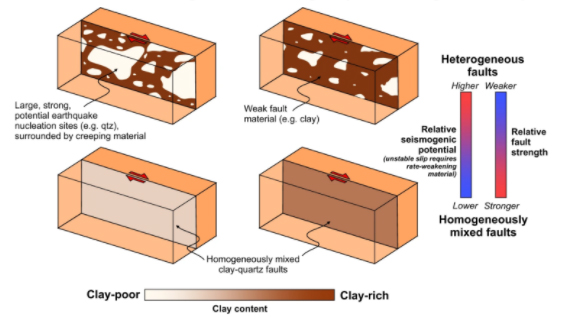Insights into creeping faults

A new study by John Bedford and Dan Faulkner, from our Department's Rock Deformation Lab, and Nadia Lapusta, from the California Institute of Technology, has revealed some new insights into the nature of creeping faults.
According to Dan:
We found that putting "patches" of fault material into simulated experimental faults led to weakening and a reduction in frictional stability - meaning that similar heterogeneity on tectonic faults in nature might lead to an increased likelihood of earthquakes occurring. In the past only homogeneous faults - those with uniform properties over the fault surface - have been tested, so our results may mean that extrapolations of experimental results to the understanding fault strength and stability may have been overestimating these parameters. All of this helps us to constrain better how tectonic faults in nature operate and to understand why some fault creep at only centimetres per year, while others stay locked and periodically produce earthquakes. The work is a collaboration between my lab and a colleague at Caltech and was funded by grant from the Royal Society and the Natural Environment Research Council.
The full article is open-access and can read at https://doi.org/10.1038/s41467-022-27998-2.